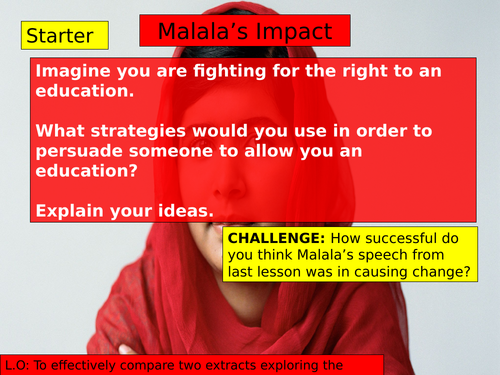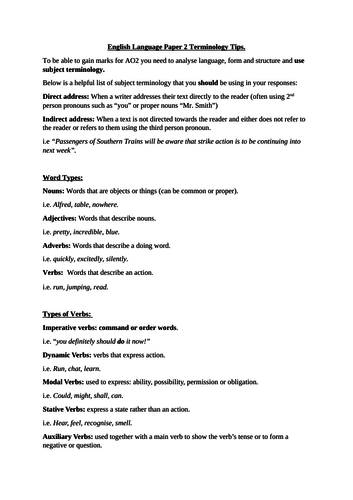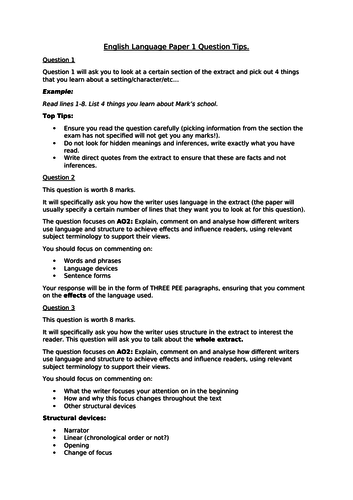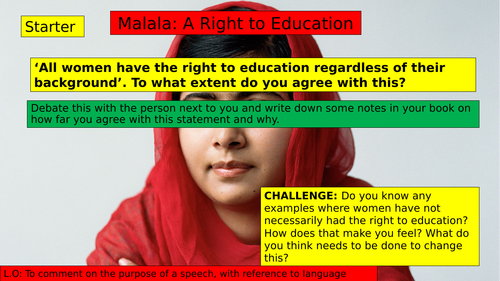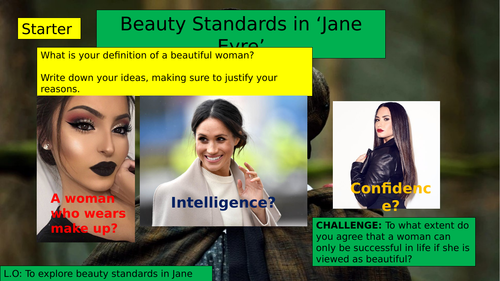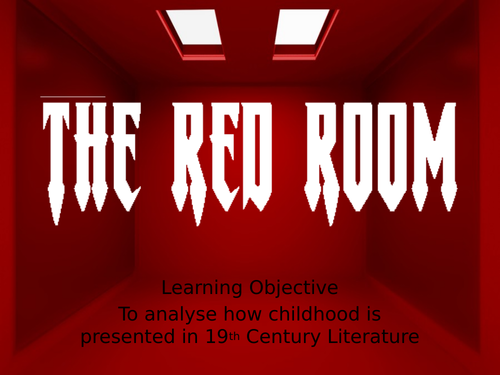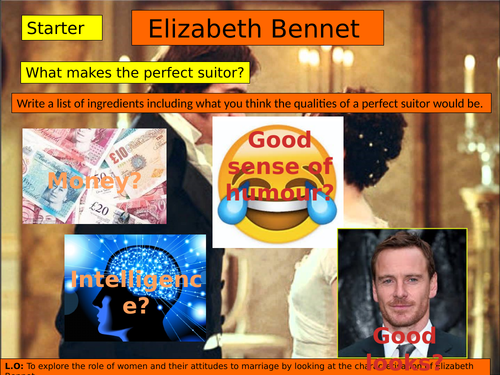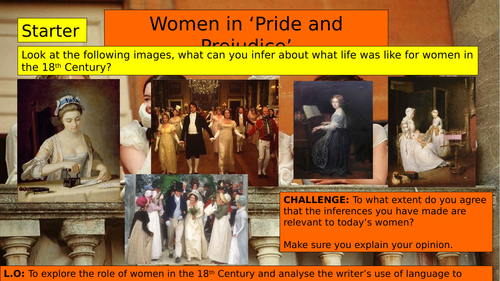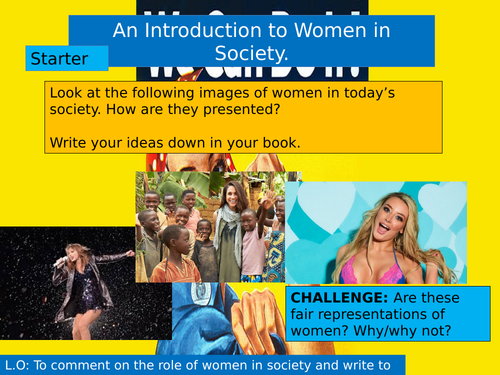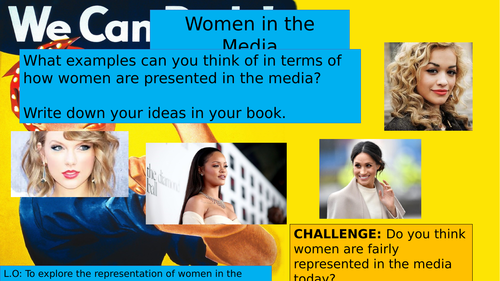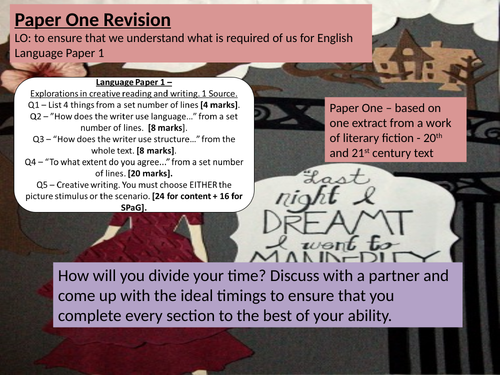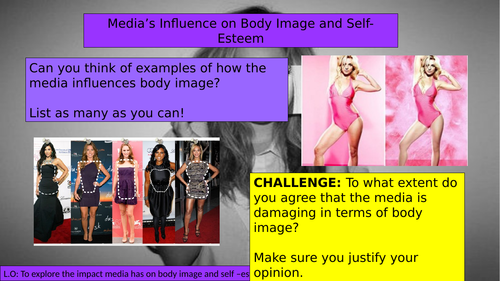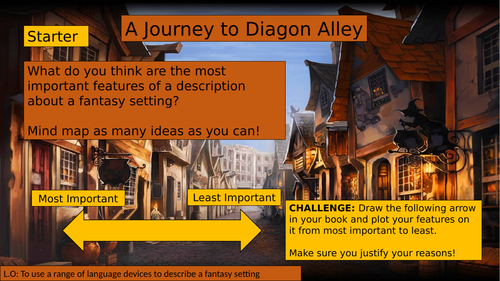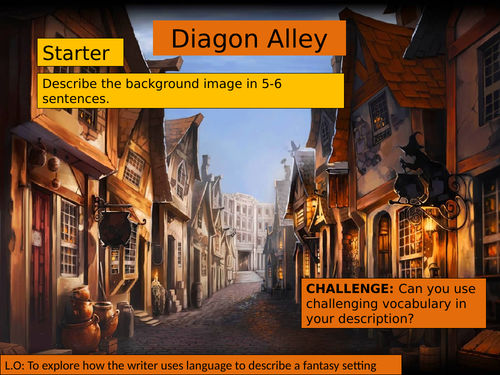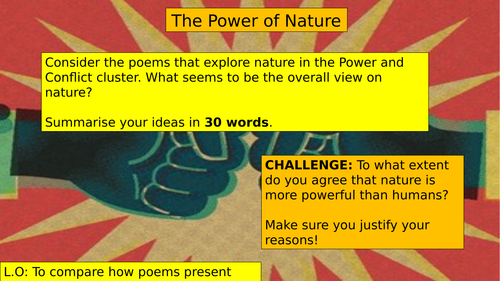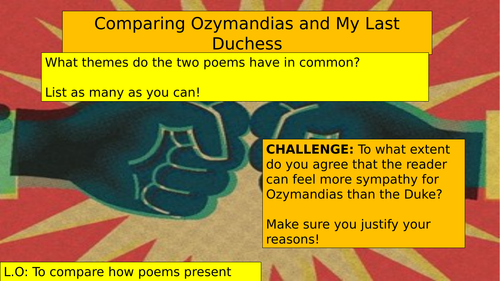60Uploads
18k+Views
4k+Downloads
English

(KS3 7/8/9) Malala's Impact
This is a lesson planned for a middle-ability Year 8 class looking at English Language Paper 2 Q2 skills. Pupils will debate the impact of Malala before looking at extracts presenting two different attitudes towards the impact Malala has had. There are activities to support pupils with making comparisons and a model text to support them with their writing. This lesson is easily adaptable for any KS3 class of any ability.

KS4 English Language Paper 2 Terminology Tips
A worksheet for KS4 pupils explaining key terminology (with definitions) to use for English Language Paper 2.

KS4 English Language Paper 1 TOP TIPS
A worksheet provided top tips to pupils on how to approach English Language Paper 1.

(KS3 7/8/9) Malala's UN Speech
This is a lesson planned for a middle-ability Year 8 class looking at Malala’s story and her speech to the UN. Pupils will explore Malala’s story about the right to education and there is support to help them annotate key language features. There is support provided to help pupils write a response about it by using a model text. This lesson is easily adaptable for any KS3 class of any ability.

(KS3 7/8/9) Beauty Standard in 'Jane Eyre'
This is a lesson planned for a middle-ability Year 8 class looking at beauty in ‘Jane Eyre’. Pupils will debate beauty expectations in the 19th Century before looking at key quotations exploring how Jane is described and the significance of Mr Rochester falling in love with her. There is support provided to help pupils write a paragraph on this through the use of a model text. This lesson is easily adaptable for any KS3 class of any ability.

(KS3 7/8/9) The Red Room in 'Jane Eyre'
This is a lesson planned for a middle-ability Year 8 class looking at the role of female children and the Red Room in ‘Jane Eyre’. Pupils will debate the role of children before looking at the extract where Jane is forced into the red room. There is support provided to help pupils annotate the extract through group work and sentence starters to write a response about it. This lesson is easily adaptable for any KS3 class of any ability.

(KS3 7/8/9) Elizabeth Bennet
This is a lesson planned for a middle-ability Year 8 class looking at Elizabeth Bennet. Pupils will debate the role of women in the 18th Century before looking at the extract where Elizabeth rejects Darcy. There is support provided to help pupils annotate the extract and sentence starters to write a response about it. This lesson is easily adaptable for any KS3 class of any ability.

(KS3 7/8/9) Women in 'Pride and Prejudice'
This is a lesson planned for a middle-ability Year 8 class. It explores the role of women in Jane Austen’s time and how women are presented in ‘Pride and Prejudice’. The lesson encourages pupils to analyse key quotes and begin to explore Language Paper 1 Q2 skills with the extract. There is also a model text to support pupils with their analytical writing. This lesson is easily adaptable for any KS3 class of any ability.

(KS3 7/8/9) Women In Society Opening Assessment
This is a lesson planned for a middle-ability Year 8 class. It is an introductory lesson looking at a Women in Society scheme of work. Pupils are encouraged to consider how women are currently presented in today’s society and pupils will write a speech presenting their point of view in response to a statement. This lesson can be easily adapted to any KS3 class of any ability.

(KS3 7/8/9) Women in the Media
This is a lesson planned for a middle-high ability Year 9 class. It explores the representation of women in the media, looking at an advert from the 1950s up to magazine covers from the modern day. Pupils can annotate these to explore key features and the effects they create. There is also an activity where pupils can compare male and female magazine covers and consider how the genders are presented in the modern day. To finish, pupils can look at how the media describe male and female celebrities and write an analytical paragraph on this. A model text has been written to support them in their writing. All short extracts, magazine covers and adverts are included with the powerpoint. This lesson can easily be split into two/three lessons and adapted for any KS3 class of any ability.

(KS4 10/11) Language Paper 1 Q1-4 'Rebecca'
These are a series of lessons planned for a middle-ability KS4 class. These lessons explore questions 1-4 of the Language Paper 1 exam individually. Pupils are able to practice writing responses to each question on an extract from ‘Rebecca’ (extract included). There are also tips and advice included on how to answer the questions and model texts to support pupils in writing their own answers. These lessons are easily adaptable for any KS4 class of any ability.

(KS3 7/8/9) Media Influence on Body Image
This is a lesson planned for a middle-ability Year 9 class focusing on how the media influences body image. Pupils will discuss various images and the impact they have on teenagers and their body image. There is also a TED talk (link included in ppt notes) for pupils to watch on the influence of media. Pupils will then write a letter to Seventeen Magazine persuading them to stop body-shaming and focusing on skinny bodies. There are sentence starters included to support pupils in their writing. This lesson is easily adaptable for any KS3 class of any ability.

(KS3 7/8/9) Social Media Influences on Teenagers
This is a lesson planned for a middle-ability Year 9 class on the influence of social media. It asks pupils to consider the purpose of social media and consider pros and cons during group work. There is a newspaper article on the impact of social media on teenagers for them to analyse (this can be independent or pair or group work) before pupils then need to respond to a question showing both sides of the argument, A model text is included to support pupils in their writing. This is easily adaptable for any KS3 class of any ability.

Tracking Fate in Romeo and Juliet
This is an A3 worksheet for KS4 classes studying Romeo and Juliet. It allows them to write key examples from the play where fate is explored to make it easier to track its importance.

KS3 7/8/9 Harry Potter: Diagon Alley Description
This is a lesson planned for a middle-ability Year 8 class. It is a continuation lesson from a previous Harry Potter lesson where pupils looked at descriptions of Diagon Alley shops (see TES profile for this lesson). Pupils are now going to write a description imagining they have gone to Diagon Alley themselves and have visited a particular shop. There are images to help pupils gain initial ideas and a clip is included to help them begin to form descriptions. Group work is involved in the planning stages and roles of team leaders are available to pupils of a higher ability in the class. Worksheets are also included showing images of various shops. Each group can receive a set of images of one shop to focus their description on. This lesson is easily adaptable to any KS3 class of any ability.
Shops included:
Gringotts
Flourish and Blotts
Ollivander’s Wand Shop
Eeylop’s Owl Emporium
Madam Malkin’s Robes for all Occasions

(KS3 7/8/9) Harry Potter: Diagon Alley
This is a lesson for a middle-ability Year 8 class focusing on fantasy worlds. This lesson looks at extracts describing key building in Diagon Alley. Pupils have a broken-down task of identifying key language devices in each extract. There is then a GCSE-style (English Language) question for pupils to write a paragraph responding to. There is a model paragraph to support pupils in writing their own. This lesson is easily adaptable for any KS3 class of any ability.

Ready Player One: Creating your own Oasis
This is a lesson created for a middle-ability Year 8 class. It focuses on comparing two small extracts describing Wade’s situation and the Oasis. Pupils will select language devices used and the impressions they create for the reader. Pupils will then use these descriptions to write an opening description of their own Oasis. Sentence starters are provided to support pupils in their writing. This is easily adaptable for a KS3 class of any ability.
Bundle

AQA GCSE POWER AND CONFLICT POETRY
This is a GCSE revision bundle focusing on key themes explore in the Power and Conflict poems. It includes a range of activities from: comparison tables, model texts to annotate and planning support to write GCSE-style responses. This is easily adaptable for any KS4 class of any ability.

AQA POWER AND CONFLICT POETRY: POWER OF NATURE
This is a GCSE lesson revision focusing on the power of nature that the AQA Power and Conflict poetry explores. The lesson features a range of activities that you can pick and chose from to suit your class. They range from pupils completing a comparison table to identify what poems link in terms of the power of nature; to a model text to analyse to support pupils in writing a response to a GCSE question. This is easily adaptable for a KS4 class of any ability.

AQA POWER AND CONFLICT POETRY: PRIDE
This is a GCSE lesson revision different types of pride in Ozymandias and My Last Duchess from the AQA Power and Conflict poetry cluster. The lesson features a range of activities that you can pick and chose from to suit your class. They range from pupils completing a table (included) to compare the two poems and the methods used by the poets to present pride; to a run through of each poem linking to the theme to then support pupils in writing a response to a GCSE question. This is easily adaptable for a KS4 class of any ability.

